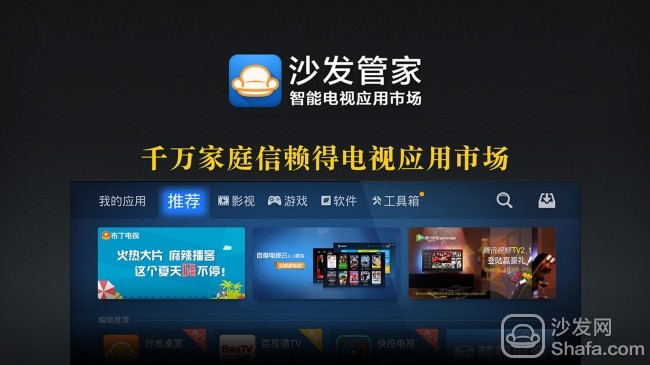2014 China Smart TV Industry White Paper (Summary Version)
Chapter 1: Overview of China's TV Industry
1.1 Cross-border Integration into the 2014 TV Industry Keywords
In 2014, TV continued to develop in the direction of intelligence. Terminal equipment needs a better user experience and operators need better services. Smart TV is an open platform behind which all types of content and service providers can access. . The cross-border entry of Internet companies is subverting the composition of the TV industry value chain, and the TV industry is facing new trends:
1.1.1 Multi-screen interaction acceleration
Television, computers, mobile phones, PADs, and cameras are organically integrated in five screens, and multi-screen interaction naturally brings together industry convergence. This fusion is first manifested in the unified operating system, Android monopolized 70% of the operating system, the same operation to achieve cross-interaction between different screens; the other is the integration of the chip, the chip is the brain of all electronic products, the same "Think system" to achieve consistent action.
1.1.2 Networking has become "standard"
The trend of TV industry networkization has two meanings: First, TV enters the era of network standardization, and AVC statistics show that in 2014, the penetration rate of Internet TV reached 71%. Second, the purchase of home-grid power grids has continued to increase, and the total sales volume of TV networks has continued to increase. It is expected that the total share of online TV will reach 16% in 2014.
1.1.3 The service service model starts
In the past, the sale of television was the end of the industry chain. However, in the era of intelligence, the sale of television represents the end of the manufacturing industry chain and the beginning of the industry chain of the service industry. This is a huge challenge for traditional TV companies. . The content, applications, and services of television have become more of a concern for consumers to buy television.
1.2 Bigger, thinner and better picture quality leads the technological change
1.2.1 Super clear resolution: 4K
A 4K TV is a television with a physical resolution of the screen of 3840×2160 (QFHD) and capable of receiving, decoding, and displaying a video signal with a corresponding resolution. The resolution of 4K TV is 4 times that of Full HD (FHD.1920×1080), which is about 9 times that of HD (HD.1280×720).
2014 is the first year of 4K technology application. With the improvement of 4K panel technology and increase of production capacity, the cost of 4K panels has gradually declined, laying the foundation for the promotion of 4K TVs. In 2014, brand manufacturers put 4K TV as the focus of market competition and launched new 4K television products. According to AVC, 4K listed models will exceed 200 in 2014, accounting for 25% of the models listed in the 14th year.
1.2.2 Ultimate Quality Experience: OLED
With the OLED technology called “Next Generation Display Technologyâ€, it has got rid of the TV’s dependence on the backlight and realized the organic self-luminescence of the pixels. It has unparalleled advantages in terms of infinite contrast, color expression, screen response speed and viewing angle. The advantages. In 2014, OLED TVs entered the public view, but due to the low yield of OLED production and the large panel cost, the price of OLED TVs remained high and the market promotion was limited. Based on this, there are companies that make innovations based on LED TV technology. The quality has been improved on the basis of maintaining the cost performance of television products.
1.2.3 Overturning TV Senses: Surfaces
In September 2013, the Chinese market ushered in the first curved TV. The curved TV is more in line with the human visual habits and close to the real scene seen by the human eye. 2014 was the starting year for curved-surface TVs. Up until now, a number of complete machine companies have launched surface new products. As a new market stimulus point and growth point, 4K curved TV is gradually being accepted by consumers. According to AVC data, during the 11th National Day, the surface TV sales penetration rate of the urban market has exceeded 4%, and it is estimated that in 2014 China's curved TV retail volume will reach 150,000 units.
1.2.4 "Laser Cinema" Creates an Alternative Audiovisual Experience
The so-called "laser theater" is essentially laser ultra-short-focus projection. Generally, the projection distance is shorter than half a meter. It takes care of the traditional home projector's high environmental brightness requirements. With the projector's reflective display principle, it completely eliminates direct light. The harm caused by the human eye is not dazzling for a long time. The color gamut coverage theoretically can be as high as 90% of the human gamut, which is higher than most LCD TVs on the market. Not only can the entire TV picture look more realistic, have a sense of depth and transparency, but also The sharpness of the picture will also increase significantly with the increase of color saturation. Since lasers are used as the backlight for televisions, laser televisions can be made thinner for home use. In terms of laser television, Chinese enterprises have already occupied market opportunities. In September 2014, Hisense took the lead in releasing laser theaters. Then TV companies such as Konka and TCL also actively researched and joined the “Laser TV†camp. It is expected that more companies will join in 2015. Come in, there are many international consumer electronics brands.
Chapter 2 Overview of China's TV Market in 2014
Ovid Consulting (AVC) expects that the total domestic color TV market in China will reach 45.09 million units in 2014, a year-on-year decrease of 5.6%. The 14-year decline in the color TV market compared to the 13-year period is mainly due to the following two points: First, the macroeconomic downturn, the development of the real estate industry has slowed down, and the demand for color TVs has weakened; second, the exit of home appliances to the countryside policy, Cause the normal shrinkage of the color TV market.
2.1 The Chinese TV market still has potential for development
2014 is the first year for China to fully implement the spirit of the Third Plenary Session and comprehensively implement structural reforms. Macroeconomic development has shifted from promoting growth to adjusting the structure. The period of rapid economic growth has passed, and GDP growth is slowing down. It is estimated that GDP will grow in the next five years. The growth rate will remain between 7% and 7.5%. The growth rate of residents' income is basically the same as that of GDP. The income growth of rural residents is greater than that of urban residents.
Urbanization is a natural historical process accompanied by industrialization, non-agricultural industries gathering in cities and towns, and rural population concentrated in cities and towns. It is an objective trend of human social development and an important symbol of national modernization. The publication of the National New Urbanization Plan (2014-2020) provides guidance for China's new urbanization construction. In the future, China's urbanization will mainly accomplish the goal of “300 million yuanâ€: promote the transfer of rural population of about 100 million people to cities; The urban shantytown and Chengzhong Village, where about 100 million people live, guides about 100 million people to urbanization in the central and western regions.
With the improvement of production capacity and the improvement of the logistics system, and after the Internet broke the asymmetrical pattern of information, the buyer’s market was formed and the entire discourse system was completely inverted. Consumers had the largest voice in the color TV industry, and the future will become the 85th and 90th. The main force of TV consumption.
In 2014, SARFT issued a series of policies to rectify TV broadcasts and reviews and non-compliant video applications. With the promulgation of the “China (Shanghai) Pilot Free Trade Zone Overall Planâ€, the relevant policies on “allowing foreign-funded enterprises to engage in the production and sales of game amusement equipment and game entertainment equipment that passes the review of the contents of cultural authorities can be sold to the domestic market†The introduction of the game host lifted the ban, allowing consumers to gradually increase the acceptance of video games. TV content and services continue to be standardized and enriched.
In summary, although China's TV market has experienced a slowdown in growth, as China's comprehensive regulation gradually shows its effect, the Chinese TV market has great potential for development.
2.2 Channel "on the line" Price "down"
2.2.1 E-commerce "scratching" marketing is busy "hot" high-end
From the sales rhythm, the peak of the offline market appeared during the Yuanchun period, and the peak of the online market appeared in June, August and November. The trend of sales of peaks and discords under the online and offline markets has become increasingly apparent. The peak sales of the offline market during the Yuanchun period benefited from the large number of migrant workers returning home to drive consumption in the rural market.
Ovid Consulting (AVC) estimates that the total amount of online shopping will account for 16% of the total color TV sales channels in 2014, and the proportion of large chains in offline channels will further decline. Higher channel costs are the bottleneck for the development of large-scale chain channels. The emergence of online shopping and reservation systems reduces channel costs through information and collaboration, which helps TV companies to ensure profitability by reducing costs. The online market, which was good at stimulating consumption through “Making Festivalâ€, seized 618, 818, Double 11 and other nodes in June, August and November, and also helped the development of the online market.
It can be foreseen that in the future, mid-to-low-end products will be sold more through low-cost channels such as online and O2O; and the large chain with high channel costs will become the main battlefield for high-end products, especially the high-end products of foreign brands. .
2.2.2 The continued low prices
According to AVC's total data, the average TV market price was 3,405 yuan in January 2014, and the average color TV market price was 3,251 yuan in September 2014, and the average price dropped by 4.5%. The market price on the color cable was low. more competitive. From the aspect of price segment sales, it is estimated that the sales volume of products between 1000-2999 yuan in 2014 will account for more than 50%, occupying half of the color TV market; during the May 1st and Mid-Autumn Festival, the product growth of 3000-4999 yuan will be faster, and the sales volume will increase significantly. The main reason is that First, Mid-Autumn Festival node promotion is mainly based on the urban market. Consumer demand for high-end products is relatively large.
2.3 Super-resolution large-screen smart TV further development
With the advancement of panel technology, perfection of television systems, and rich software content, the penetration rate of high-definition, large-size, and intelligent products has been rapidly improved.
According to AVC's general data, in 2014, the share of 32- to 34-inch products further narrowed, the 37-39-inch share also declined, and the 46- to 50-inch product share further expanded, 51-inch and larger. The increase in product share is the largest increase in the size segment in 2014. The rapid increase in this size segment is mainly due to the rapid increase in sales of 55-inch products in the color TV industry.
In the future, the competition around 40-inch upper and lower size sections and 50-inch upper and lower size sections will further intensify. Properly matching products and perfecting their own product lines will become the key to the large-scale process of color TV companies.
In the concept of smart TV users, television is not just a television but a large-screen interactive platform. In the intelligent large-screen interactive platform, diverse needs such as video on demand, games, social networking, and fitness have been derived. In the future, TV big screen will play the role of information aggregation and presentation center in smart home. Users operating around this big screen will become a source of profit for upgrading hardware.
Chapter III Analysis of Consumer Behavior in TV Market
In order to understand the reality of the TV market in 2014 and the factors that consumers consider when selecting smart TV category, brand, etc., People's Network Home Appliances Channel conducted research by issuing questionnaires. The survey collected 23,124 questionnaires and 22,587 valid questionnaires. (Note: The following data are survey data of People's Daily Network, unless otherwise specified)
3.1 Smart TV has become the absolute mainstream in the market

The survey results showed that the proportion of respondents who spent 1-3 years of television was 65.1%, while the percentage of respondents who spent more than 5 years was only 22.0%. It is obvious that the problem that TV makers urgently need to solve in the near future is how to promote the popularization of the concept of smart TVs, and encourage new users who purchase flat-panel TVs to purchase smart TVs again within three years.
3.2 Do n't let “smart†become furnishings

According to survey data, the penetration rate of smart TVs has exceeded 50%. As people's demand for home entertainment increases, more and more families choose smart TVs, and traditional TVs are transforming into smart TVs. The traditional TV manufacturers including Hisense, TCL, and Changhong continuously develop new product forms and models of smart TVs and have launched their own smart products.
The competitive environment brought about by the rapid rise of smart TVs not only stimulates TV manufacturers to continue to introduce more powerful products, but also allows Internet companies such as LeTV and Xiaomi to see new profit points and compete in the smart TV market.
3.3 Smart TV still has a lot of market space
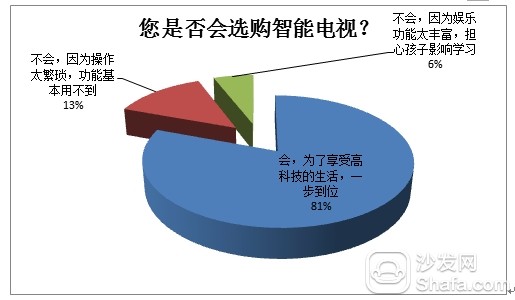
Although the above survey shows that consumers actually purchased smart TVs for a relatively short period of time, it still has more than 80% of consumers willing to purchase smart TVs. After all, in the current market, large-size TV products have been almost "intelligent", and consumers want to buy a product that does not have smart features, but it is more difficult.
3.4 Price and Function as Main Considerations for Purchase
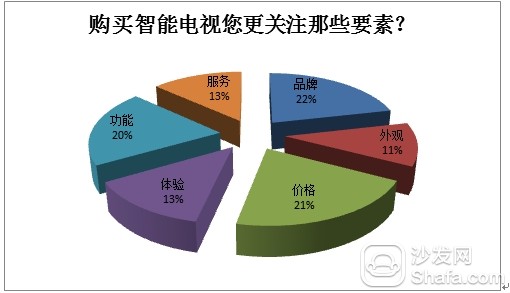
In the survey, among factors that affect consumer choice, the three dimensions of brand, price, and function have become the decisive factors for consumer choice. In addition to the inherent brand preference factors, the price and function of smart TV have received more attention. Before the advent of smart TVs, consumers were more concerned with design and after-sales service.
3.5 The quality is still the nature of television
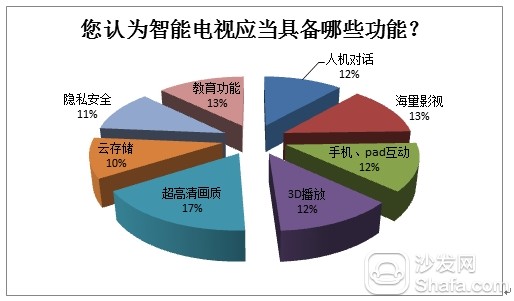
Consumers participating in the survey had a more average view of the functions that smart TVs should have. 17% of consumers voted for the “ultra-high definition quality†option. It can be seen that consumers’ pursuit of TV is still high quality. It is suggested that television manufacturers should not only pay attention to the expansion of intelligent functions when developing products, but should also focus on improving the picture quality.
3.6 Online video will be the "match of the smart TV"

The survey shows that more than 50% of consumers use video on demand in their use of smart TVs, followed by news and information content, and in the corporate publicity hype, "multi-screen interaction and voice control" in practice Not commonly used in applications. At present, the most useful function of smart TV is video on demand. As the country's monitoring of video on the Internet increases, the difficulty of future development will increase. However, online video entry is bound to become a major TV competition for consumers. "The battleground."
3.7 Smart TV Online Movie "Content is King"
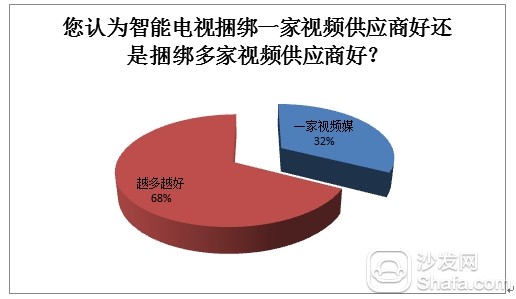
For consumers, it is naturally “better and better†to be able to order their favorite movies and TV programs after smart TV networking. However, as the country continues to strengthen the supervision of smart TV video applications, the content of smart TV video content continues to be standardized, highlighting the content-rich importance. TV manufacturers, if they can integrate multiple content providers, will be more attractive to consumers.
3.8 Consumers Do Not Recognize "Paying View Mode"
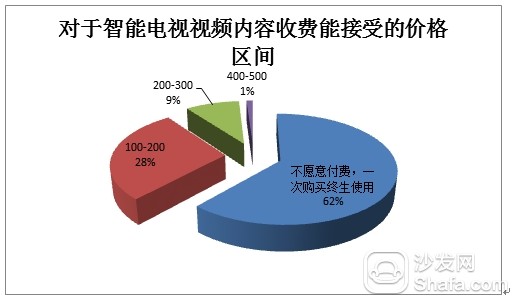
The survey shows that more than 60% of consumers believe that smart TV should provide video content service for free for life. One purchase can be used free of charge forever. It seems that “leTV mode†consumers who enjoy ultra low-cost TV pay services do not buy it. It seems that China Consumers still have a long way to go for changes in TV consumption patterns.
3.9 No breakthrough has been made in domestic brands' strong occupation of emerging brands
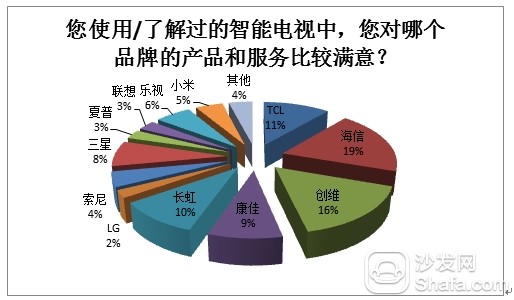
The pattern of China’s TV market has been stable for a long time. From the survey results, this pattern has not changed in 2014. The traditional “China Top 5†Hisense, TCL, Skyworth, Changhong, and Konka still have high awareness in the eyes of consumers. In addition to Samsung, which accounts for 8% of foreign brands, Sharp, Sony, and LG are all below 5%. It is worth noting that in the past two years, the TV military, LeTV, Xiaomi, and Lenovo, which are very "hot", still have a larger overall market share than the traditional TV companies. Compared with propaganda "sturdy," there has been no obvious breakthrough.
Chapter IV Future Trends in the TV Market
After the rapid growth of the color TV market from 10 to 13 years, the market demand is approaching saturation. In the next few years, the high growth trend of the color TV market will be absent or even negative growth. The color TV market slows down, market competition shifts from the original incremental market to the stock market, and the previous price war will no longer be effective. Changing the application, increasing TV added value, and creating new consumer demand will become the main reason for enterprises to gain market competitive advantage. the way.
4.1 E-commerce channels will become mainstream
In 2014, e-commerce companies have made considerable progress. The booming e-commerce rural “sweeping walls†incident has shown that major e-commerce channels have locked future growth targets in the vast rural market. The logistics difficulties that have long plagued rural e-commerce will be effectively solved by the huge capital of JD.com and Ali. Ovid Consulting (AVC) expects that the total number of color cables on the market in 2014 will reach 7.46 million units, accounting for 16% of the total. In 2015, the total number of color cables on the market will reach 8.12 million units, accounting for 20%, 2016 TV The total online market will exceed 10 million, accounting for 25%.
4.2 Diversification of marketing methods and internetization
In 2013, the competition environment of Internet brands concentrated across the border into the color TV industry. The competitive environment of China's color TV market has become increasingly complex. In a complex environment, new marketing models (WeChat marketing, Weibo marketing, etc.), business models (content fees, value-added service fees) And so on). The future color TV marketing model will continue to innovate, but the success of the marketing model should ultimately rely on the needs of users, doing precision marketing.
4.3 New Technology "Difficult to Climate"
In 2014, OLED TVs and curved TVs really started to be marketed. Compared to 4K TVs that have already accumulated in certain markets, OLEDs and curved TVs have a long way to go. Due to the low production yield of OLEDs and the relatively high cost of OLEDs, the price of OLED TVs remains high and the market promotion becomes more difficult. However, it can be predicted that OLED will eventually replace LCD TVs as mainstream products. At the same time, the surface has become the latest development trend in the color TV industry following the “ultra-high definition, large size, and smartâ€. In the future, the focus of competition in China's color TV market will shift from flat to curved surfaces.
Recommended installation sofa butler Download: http://app.shafa.com/
